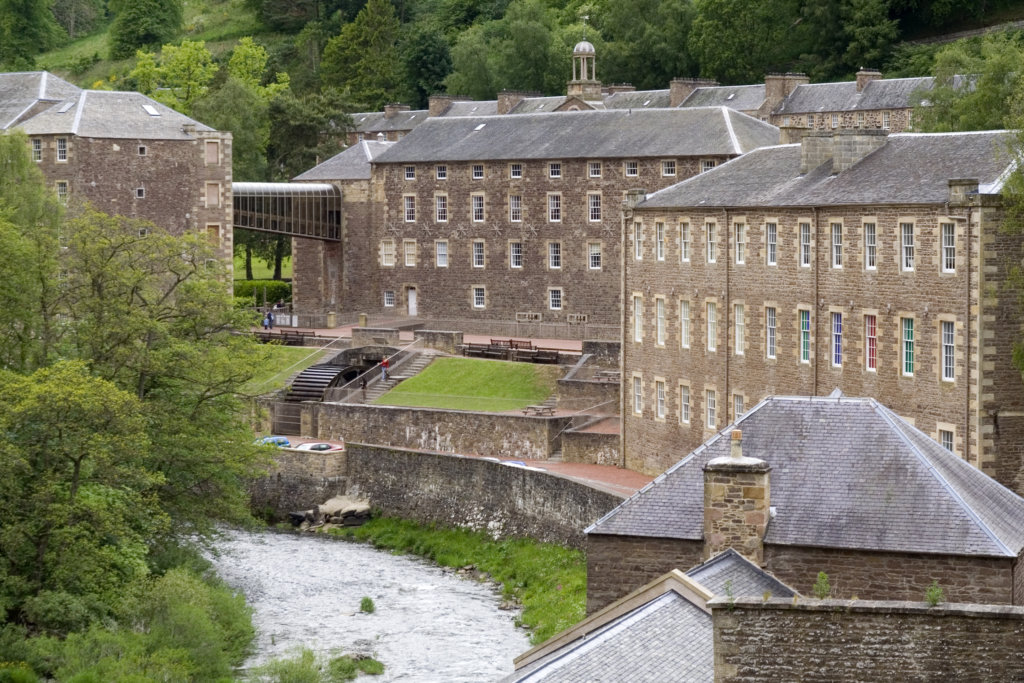
Flexi Flue
New Lanark is a purpose-built 18th century mill village in the Lanarkshire countryside. This important milestone in the historical development of urban planning was saved from demolition in the 1970s by the New Lanark Conservation Trust (now the NLT). Gradually the buildings were faithfully restored and, in 2001, the village became a UNESCO World Heritage Site.
The brief
Replacing a back boiler with a condensing boiler is a fairly straightforward operation, unless your property has been designated a UNESCO World Heritage Site, as Tamara Jones discovered when she bought her house in New Lanark in 2006. A 25-year-old gas back boiler installed in the basement of the four-storey property provided the heat and hot water but, when it began breaking down on a regular basis, spare parts were getting harder to source and Tamara was tired of waiting an hour for the water to heat up for a bath, she decided it was time to upgrade the heating system. She specifically wanted a condensing gas boiler so she could enjoy the benefits of economy and control, and asked Steve Collins, Managing Director of Valleytech Heating, who maintains the heating systems in many of New Lanark’s properties, to advise on next steps.
The problem
As all the properties in New Lanark must conform to stringent planning regulations, as well as gain the approval of the NLT to ensure their ‘Outstanding Universal Value’ is protected for future generations, most property owners who had upgraded their heating systems had gone all-electric. And this is what Steve suggested for Tamara’s home; as the system didn’t need to be flued, the fabric of the building would be unaffected, and no planning permission would be needed. Tamara didn’t want to impact on the building’s architecture in any way, but she was clear that she wanted gas not electric.
And so began a six-year investigation, where Steve looked into methods of camouflaging the flueing that didn’t contravene planning regulations and would meet the NLT’s criteria. Presentations were made, but none were approved.
The solution
Steve refused to believe the problem was insurmountable and continued to talk to merchants, installers and manufacturers to see if they’d had to deal with this kind of flueing issue. In 2019 he met Alex MacAllister, the Intergas National Account Manager for Scotland, who told him he could easily solve the problem by installing the Intergas Flexi Flue. The Flexi Flue is a 10-metre flue system that can line a
Class 1 chimney all the way to the top of the chimney pot, leaving the exterior fabric of the building untouched.
Now this did meet with Building Regulations and NLT approval, but Steve still had to work out which chimney belonged to Tamara’s property. When the houses were originally built, they were for multiple occupancy, with fires on all floors, and all the terraced properties had shared chimneys in the party walls. There were six chimneys running through Tamara’s property.
A smoke bomb helped locate the chimney pot and, from there, it was down to Steve to ascertain, using vibrations and precise measurements, where in the wall he’d locate the correct chimney to install Flexi Flue. Once done, installation started.
Steve specifically selected the HRE 36/40 combi because it has the power to enable a home to run two baths at the same time*, and you only heat the water you need, which is highly energy efficient. And, with Tamara’s double height living room, cost effective heating is a must.
He sited the boiler in the attic, to keep interior disturbance to the minimum and, for convenience, the pressure gauge and filling loop were kept in a cupboard on the next floor down. It was a highly complex operation but, at the end of three days, New Lanark had its very first energy-efficient gas heating and hot water system.
*Subject to various installation factors which must be checked by the installer beforehand.






